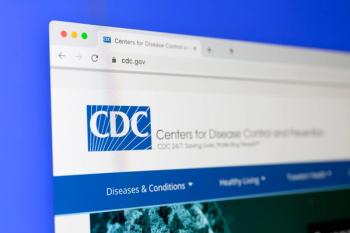
A Call for Antibiotic Stewardship in Urgent Care
Although resistance can be attributed to many different causes, inappropriate prescribing is arguably one of the main contributors.
Urgent care centers are on the rise as new facilities are opening across America each year. But as visits to urgent care centers are increasing, new worries are surfacing regarding just how often a visit results in an unnecessary prescription.
Antibiotic resistance is a pressing issue that is a constant threat to public health and can lead to several adverse drug events. Although resistance can be attributed to many different causes, inappropriate prescribing is arguably one of the main contributors.
To this end, investigators on a new retrospective study published in JAMA Internal Medicine and funded and led by researchers from the US CDC, sought to compare the prescribing patterns for respiratory infections that do not require antibiotics in urgent care centers, retail clinics, emergency departments (ED), and medical offices.
Using data from the 2014 Truven Health MarketScan Commercial Claims and Encounters Database, which contains data for individuals under 65 years of age, the investigators collected information on patients who had visited an outpatient health care facility that year. They found that urgent care center visits produced the most antibiotic prescriptions with 39% of the 2.7 million visits leading to an antibiotic prescription. Retail clinics had a slightly lower percentage of prescribed antibiotics with 36.4% of 58,206 visits resulting in a prescription. EDs and medical office visit data indicated much less frequent prescribing of an antibiotic with only 13.8% of 4.8 million ED visits, and 7.1% of 148.5 million medical office visits, respectively, resulting in prescriptions.
In addition to general prescribing trends, the investigators also focused on patients who were diagnosed with a respiratory infection for which antibiotics are deemed unnecessary, such as bronchitis, allergies, influenza, viral upper respiratory infections, and viral pneumonia.
The data indicated that urgent care centers prescribed antibiotics for 45.7% of 201,682 patients with respiratory infections for which antibiotics are unnecessary—almost double the frequency of unnecessary prescriptions written in EDs, which occurred in 24.6% of 63,189 diagnoses. Furthermore, in medical offices, unnecessary antibiotics were prescribed in 17% of 1,563,573 respiratory cases, and in retail clinics, antibiotics were inappropriately prescribed for 14.4% of 1,444 cases.
The results of previous research conducted between 2010 and 2011 indicated that at least 30% of antibiotic prescriptions written in medical offices and EDs were unnecessary. The investigators of the new study express concern that prescribing antibiotics for antibiotic-inappropriate respiratory infections in outpatient settings may be higher than 30%.
The results of the new study indicate a significant difference between prescribing trends in different types of facilities. Most notably, the urgent care centers included in this data set exhibited signs of antibiotic overuse, presenting an area of improvement.
“Antibiotic stewardship interventions could help reduce unnecessary antibiotic prescriptions in all ambulatory care settings, and efforts targeting urgent care centers are urgently needed,” the authors conclude.
Limitations of the study include the possibility of misclassification of diagnoses by the researchers. Additionally, data were pulled from a convenience sample and are not generalizable to populations not included in MarketScan.
This article originally appeared on
Reference
Palms D, Hicks LA, Bartoces M. Comparison of antibiotic prescribing in retail clinics, urgent care centers, emergency departments, and traditional ambulatory care settings in the United States. JAMA Intern Med. 2018; doi:10.1001/jamainternmed.2018.1632.
Newsletter
Stay informed on drug updates, treatment guidelines, and pharmacy practice trends—subscribe to Pharmacy Times for weekly clinical insights.












































































































































































































